Pandesal is the most popular bread in the Philippines for a good reason! With a golden, crumb-coated exterior, slightly sweet taste, and soft, fluffy texture, this Filipino-style bread roll is delicious on its own or with your choice of filling. Perfect for breakfast or as a snack!
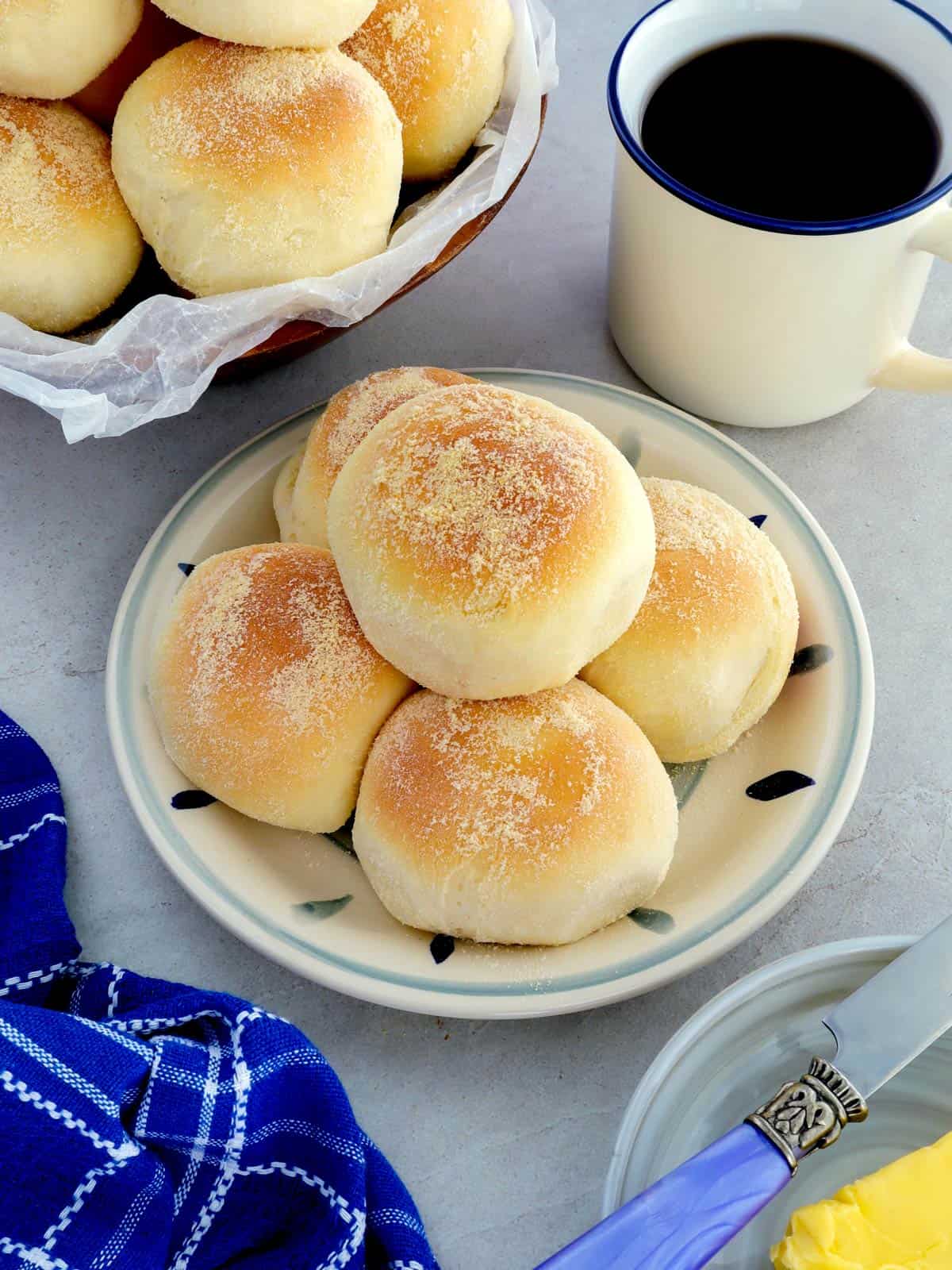
Although I am comfortable with pie crusts and do well with simple coconut macaroons, cheese cupcakes, and chocolate cupcakes, I find baking with yeast a whole different kind of beast. But since one can't have a Filipino cooking blog and not have a recipe for the most popular Filipino bread, I stepped out of my comfort zone and set out to make the best homemade pandesal ever, which I found on Lisa's Salu-salo blog.
After baking a batch following her recipe and enjoying a couple of pieces slathered with copious amounts of Chez Whiz, I realized that our fears become our limits. Making pandesal is not as difficult as I thought. In fact, the hardest part is waiting for the dough to rise! And another fact, I've baked this bread roll many times like a pro!
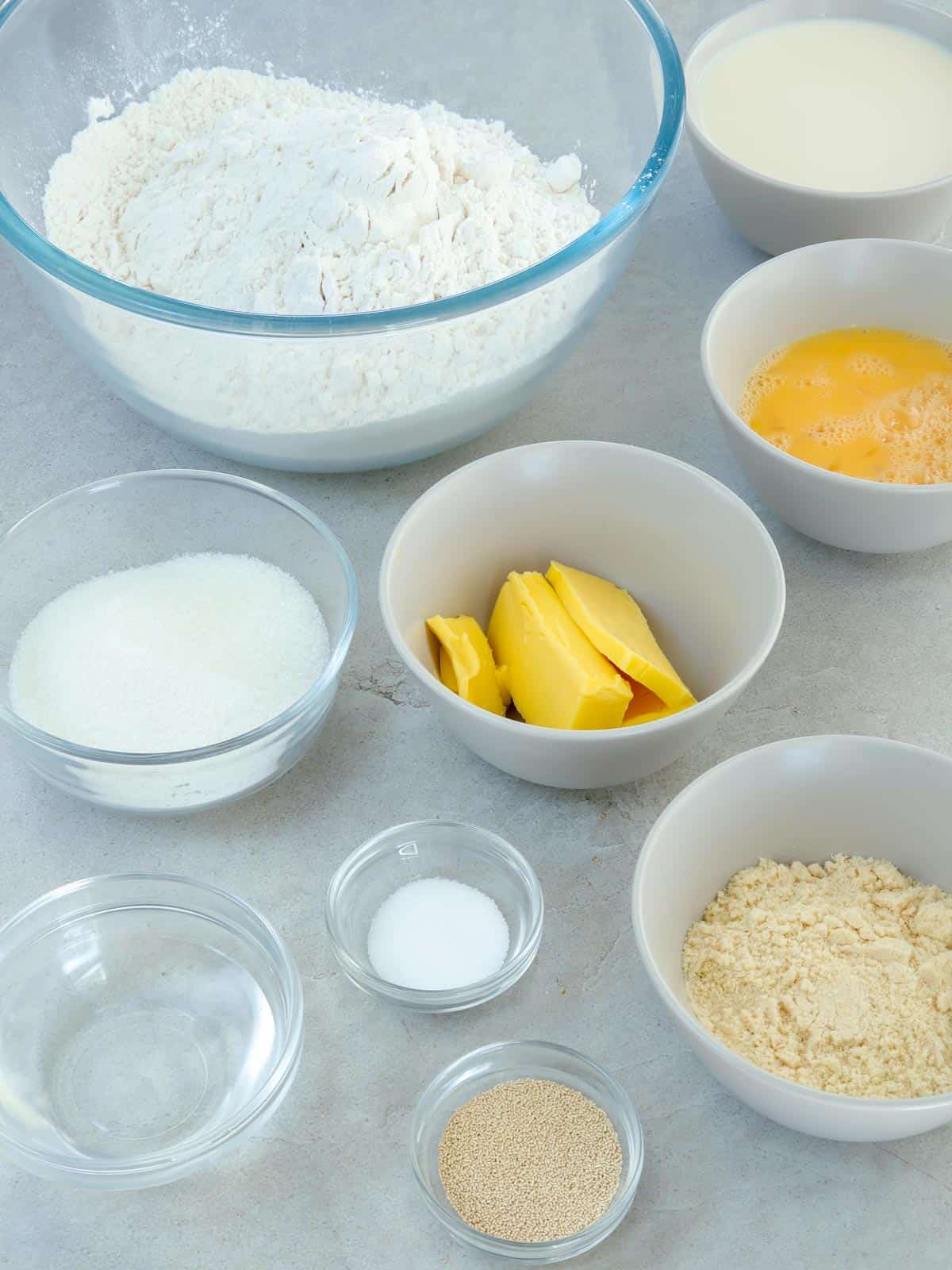
What is pan de sal
Pan de sal which is Spanish for bread of salt is traditionally made with wheat flour, yeast, water, and a pinch of salt added to the dough. Over the years, ingredients such as eggs, milk, and butter were incorporated into the basic recipe resulting in a sweeter-than-salty flavor.
Adding different flavors, such as ube, chocolate, coffee, pandan, and red velvet, is also common. For variety, the bread buns are sometimes baked with meat fillings such as shredded chicken adobo, flaked tuna, or sauteed corned beef.
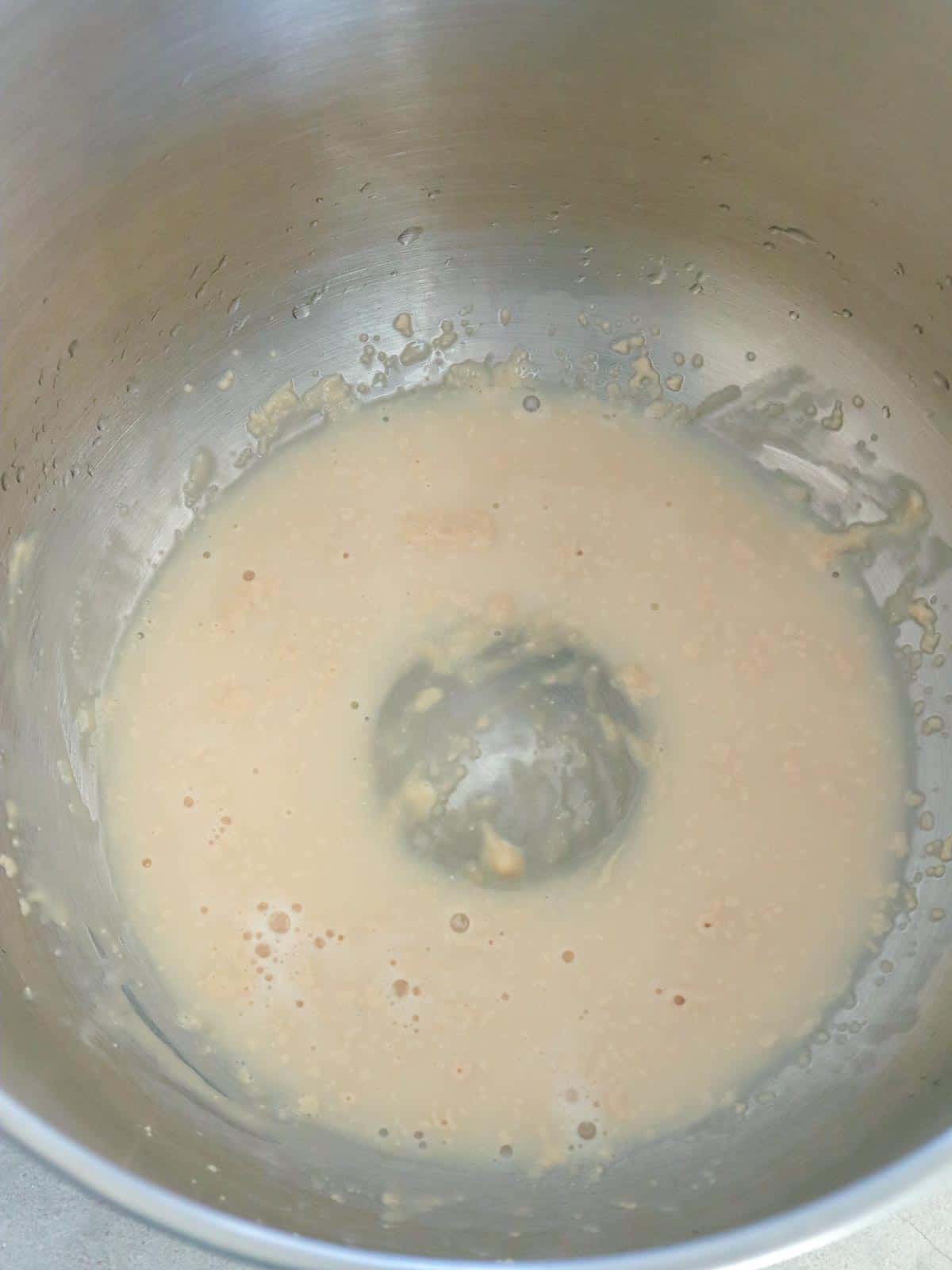
Proofing the yeast
- Make sure the temperature of the water used for proofing is between 105 F to 115 F, as hot liquids (about 135 F and above) will kill the yeast.
- The purpose of activating or proofing the yeast is to ensure it's alive and active before proceeding with the recipe. If bubbles don't appear on the surface of the mixture after about 6 to 10 minutes, it might be the liquid is too hot or the yeast is too old.
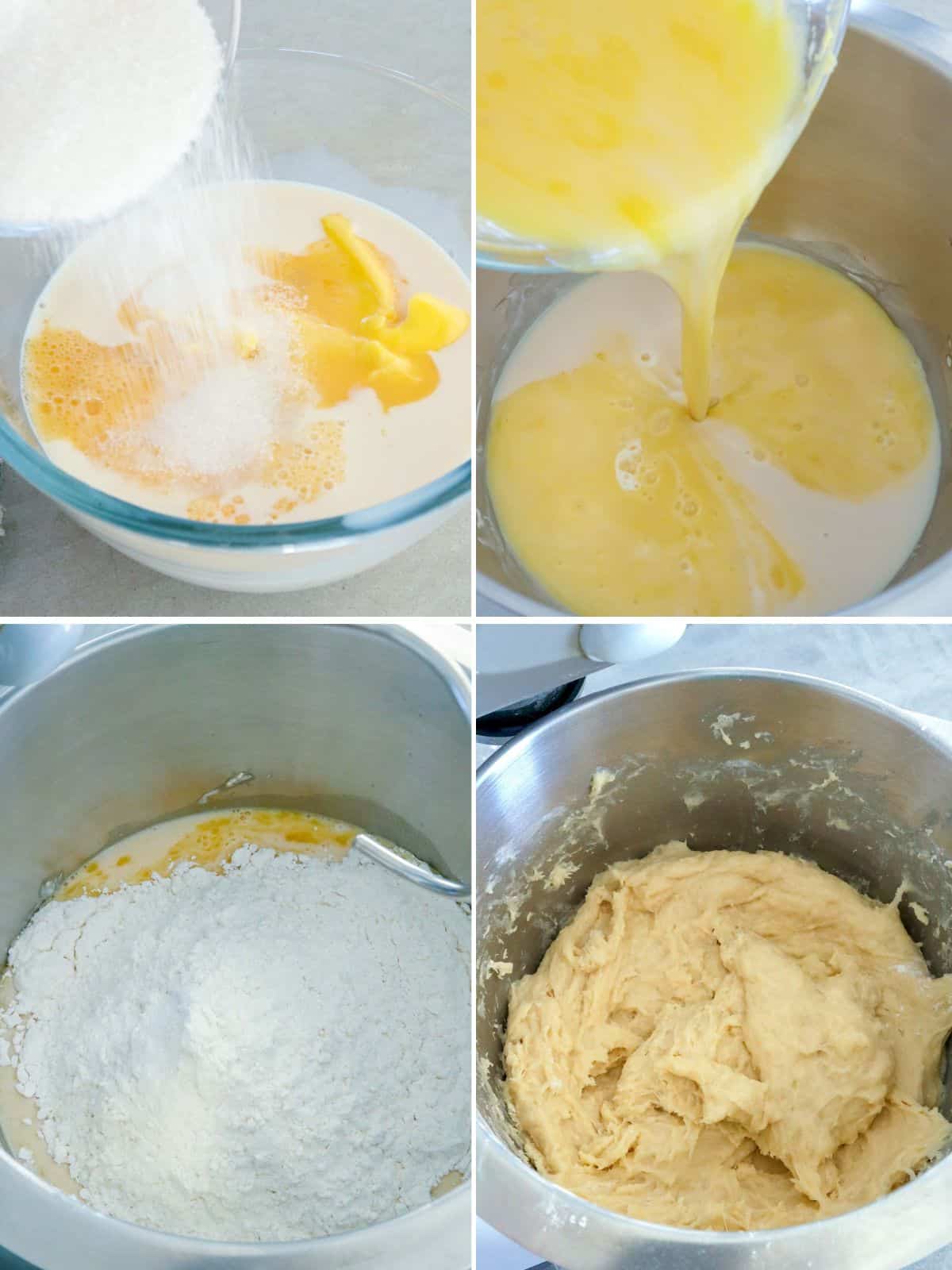
Making the dough
- Add the milk mixture and 2 cups of flour to the yeast mixture. Using the dough hook attachment, mix over medium speed until incorporated.
- Gradually add the remaining 2 and ¼ cups of flour in ½ cup increments and continue to mix until a shaggy dough forms. Turn the dough over on a flat working surface to knead.
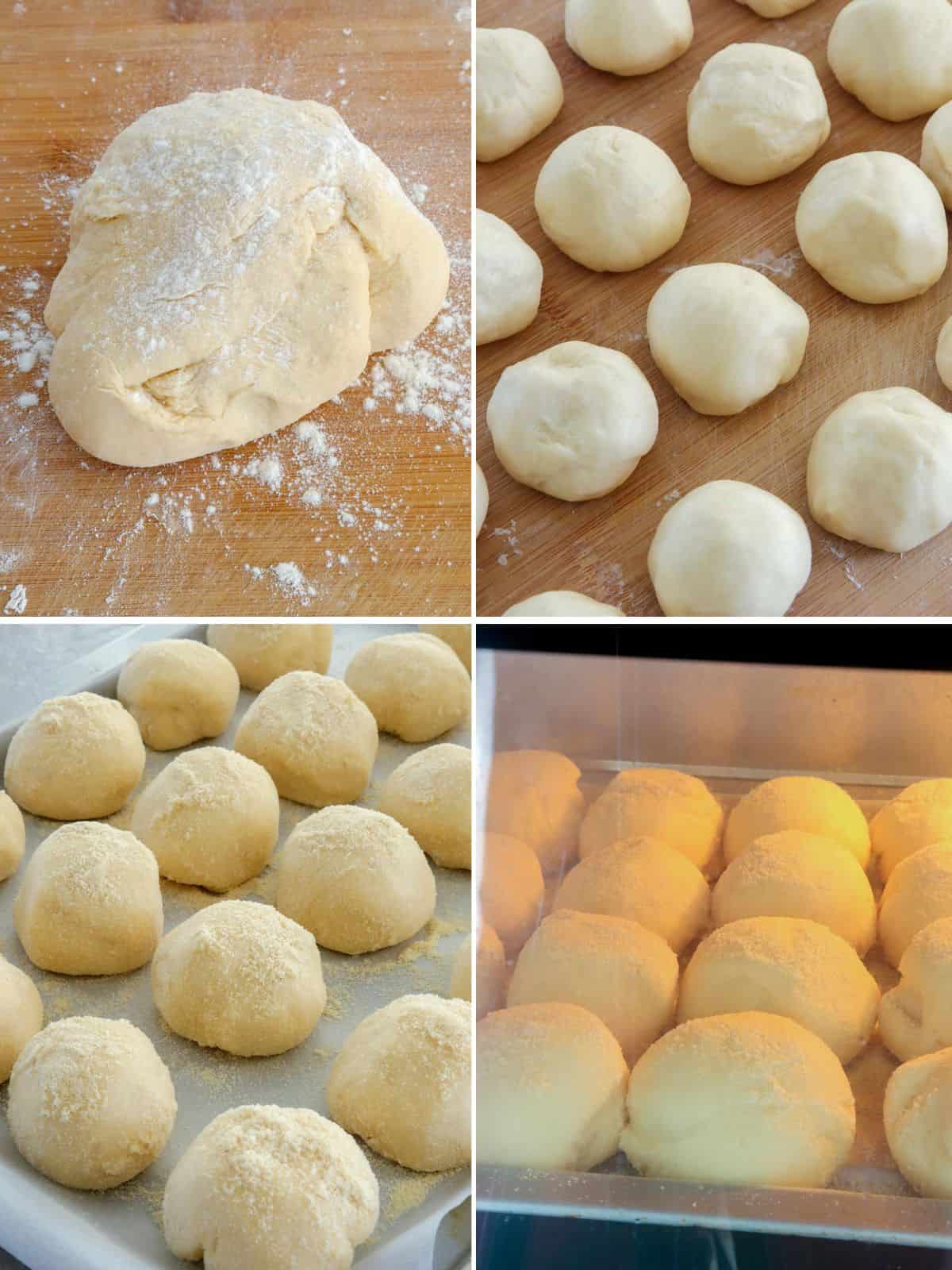
Kneading and rising
- You will need 4 ¼ cups of flour for the dough and about ¼ to ½ cups when kneading. Add the remaining flour sparingly and just until the dough is manageable. Knead the dough until it is smooth, elastic, and no longer sticky.
- Yeast grows and multiplies best at 75 F to 85 F. If your house is too cold, turn on the oven to the lowest setting for about 2 minutes, turn it off, and place the dough in the center of the oven to rise.
How to know if the bread dough has been adequately kneaded
- The dough turns from shaggy to smooth. It will lose its stickiness and will only be tacky to the touch.
- The dough is elastic. Do the windowpane test! Take a little portion of the dough and stretch it out with your fingers. It should form a thin and translucent window in the center without breaking.
- The dimple test. After you poke a finger in the surface, the dough forms a dimple, then springs back up again.
Quick tip
If you prefer the cylindrical shape of traditional pandesal, divide the dough into two parts and shape each into a long baton with a 4 to 5-inch diameter. Cut each baton horizontally into 12 portions.
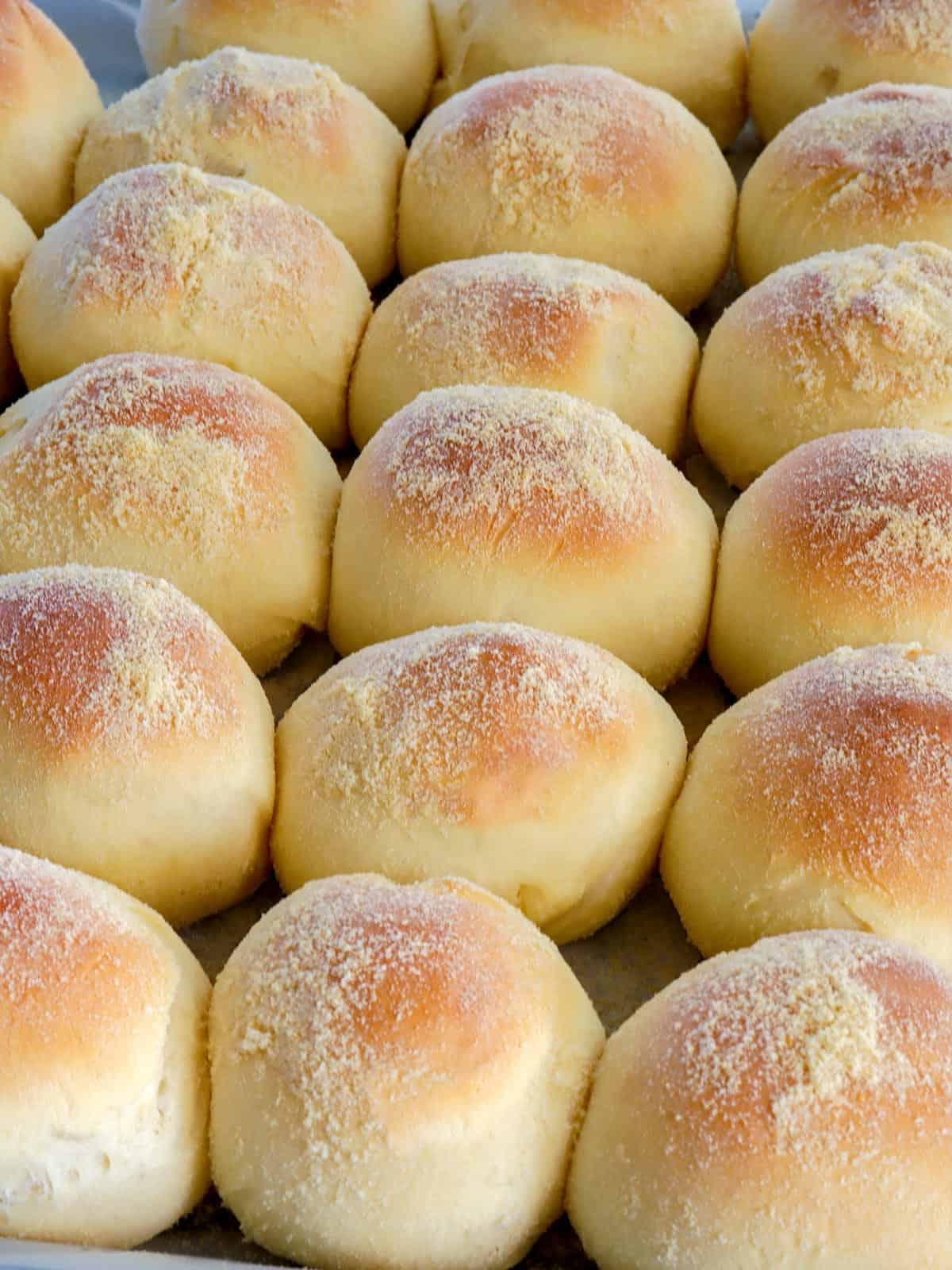
Serving suggestions
- Pandesal is the staple bread of the Philippines. Widely enjoyed throughout the day for breakfast, as a snack, or as part of a larger meal, its place in our cuisine is almost synonymous with that of rice.
- While the soft, fluffy rolls are fantastic on their own, it's common to serve them with coffee for dipping or with a choice of fillings such as cheese, coconut jam, margarine/butter, and peanut butter.
- My personal favorite is stuffing them to the brim with pancit bihon guisado. So good! And if you're lucky to catch Mamang sorbetero on the street, you can even ask him to serve your scoop of mango ice cream sandwiched in pandesal!
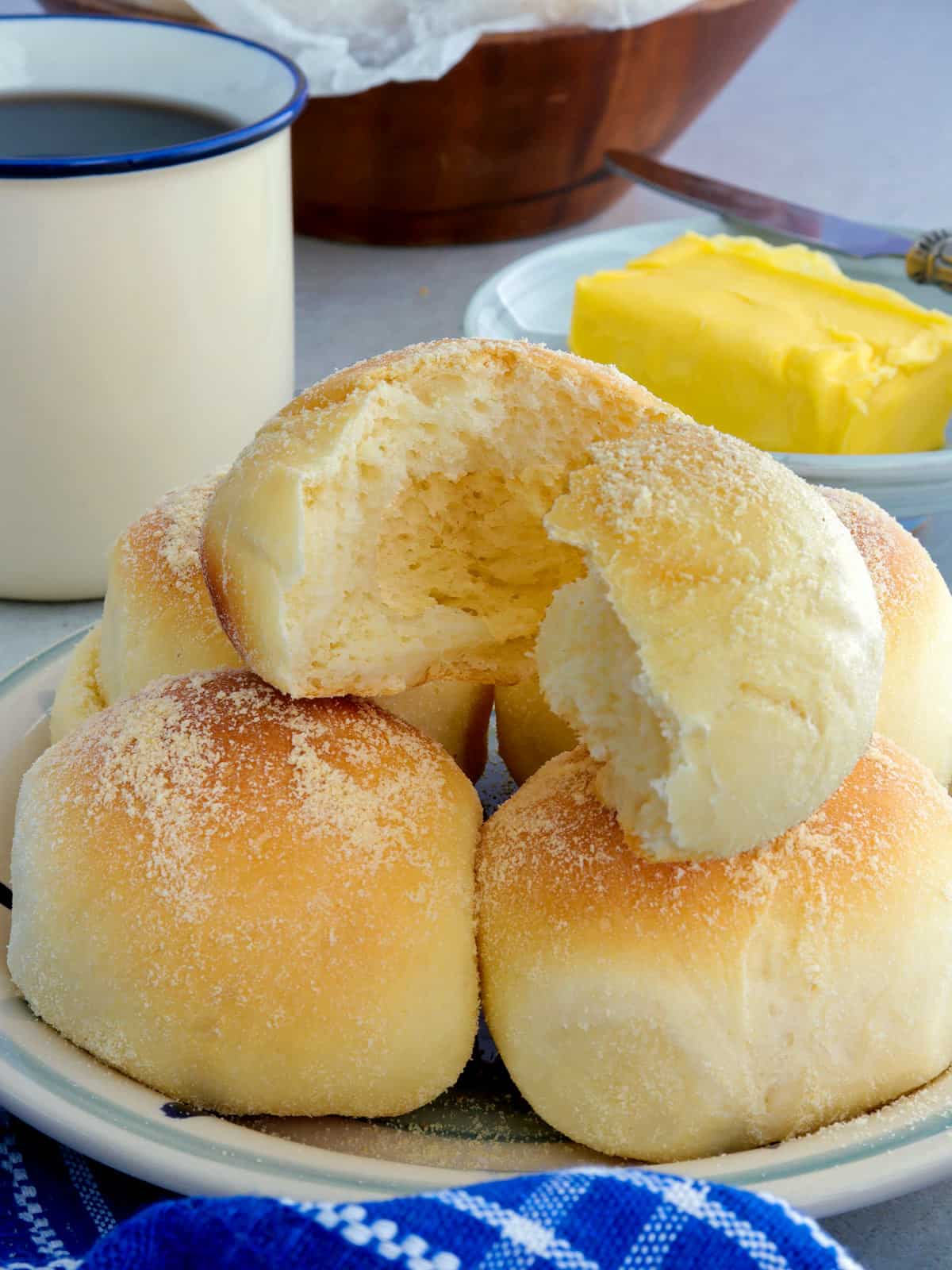
How to store
- Cool, wrap, and bag. Allow the bread to cool completely before storing. Wrap individually in aluminum foil and place in an airtight container or freezer bag to prevent drying. If using a plastic bag, release all excess air before closing the bag, as any air left in the bag will dry the bread more quickly.
- Room temperature- If you're storing them at room temperature, plan to eat them in the next few days, as they don't contain preservatives to extend shelf life.
- Freezer- To keep fresh longer, place the foil-wrapped bread in a freezer bag and freeze for up to a month. Past 30 days, the bread will start to develop frost and freezer burn.
- Refrigerator- NOT recommended as the rolls dry faster, and the taste may be altered.
Reheating instructions
- Oven- place the foil-wrapped bread in a preheated 350 F oven for about 5 to 6 minutes or until warmed all the way through. If frozen, thaw completely at room temperature and warm in the oven.
- Microwave- a good option if you're in a hurry, but watch the bread carefully as this method can quickly turn them tough and chewy. Remove the foil wrap and place the rolls on a microwave-safe plate. Cover with a damp paper towel and microwave for about 20 to 30 seconds.
Ingredients
- ¼ cup warm water
- 1 package (¼ ounce) active dry yeast
- 1 cup lukewarm milk
- 2 ounces butter, room temperature
- 2 eggs, beaten
- ½ cup sugar
- 1 ½ teaspoons salt
- 4 ¼ cups flour plus ¼ to ½ cup more for kneading
- ½ cup fine breadcrumbs
Instructions
- In a stand mixer bowl, combine water and yeast. Allow to sit for 10 minutes or until the mixture becomes bubbly. Stir well.
- In a small bowl, combine milk, butter, eggs, sugar, and salt. Stir together until incorporated.
- Add milk mixture and 2 cups flour to yeast mixture. Using a dough hook, beat to combine.
- Gradually add the remaining 2 ¼ cups flour in ½ cup increments and continue to combine all ingredients.
- On a lightly floured surface, turn over dough and knead, sparingly adding the remaining ¼ cup flour as necessary, for about 10 minutes or until smooth, supple and elastic.
- In a lightly oiled large bowl, place dough. Cover with film and allow to rise for about 1 to 1 ½ hours or until double in size.
- On a lightly floured surface, transfer dough and divide into 24 pieces. Shape each piece into a ball and roll on breadcrumbs to coat.
- Arrange balls about 1-inch apart on a lightly greased baking sheet. Cover with a cloth and allow to rise for about 1 to 1 ½ hours or until double in size.
- Meanwhile, preheat oven to 350 F.
- Bake in the preheated oven for about 15 to 20 minutes or until golden brown. Serve hot.
Notes
- Make sure the temperature of the water used for proofing is between 105 F to 115 F, as hot liquids (about 135 F and above) will kill the yeast.
- The purpose of activating or proofing the yeast is to ensure it's alive and active before proceeding with the recipe. If bubbles don't appear on the surface of the mixture after about 6 to 10 minutes, it might be the liquid is too hot or the yeast is too old.
- You will need 4 ¼ cups of flour for the dough and about ¼ to ½ cups when kneading. Add the remaining flour sparingly and just until the dough is manageable. Knead the dough until it is smooth, elastic, and no longer sticky.
- Do the windowpane test to know if the dough has been kneaded enough. Take a little portion of the dough and stretch it out with your fingers. It should form a thin and translucent window in the center without breaking.
- Yeast grows and multiplies best at 75 F to 85 F. If your house is too cold, turn on the oven to the lowest setting for about 2 minutes, turn it off, and place the dough in the center of the oven to rise.
- If you prefer the cylindrical shape of traditional pandesal, divide the dough into two parts and shape each into a long baton with a 4 to 5-inch diameter. Cut each baton horizontally into 12 portions.
Video

Nutrition Information
“This website provides approximate nutrition information for convenience and as a courtesy only. Nutrition data is gathered primarily from the USDA Food Composition Database, whenever available, or otherwise other online calculators.”

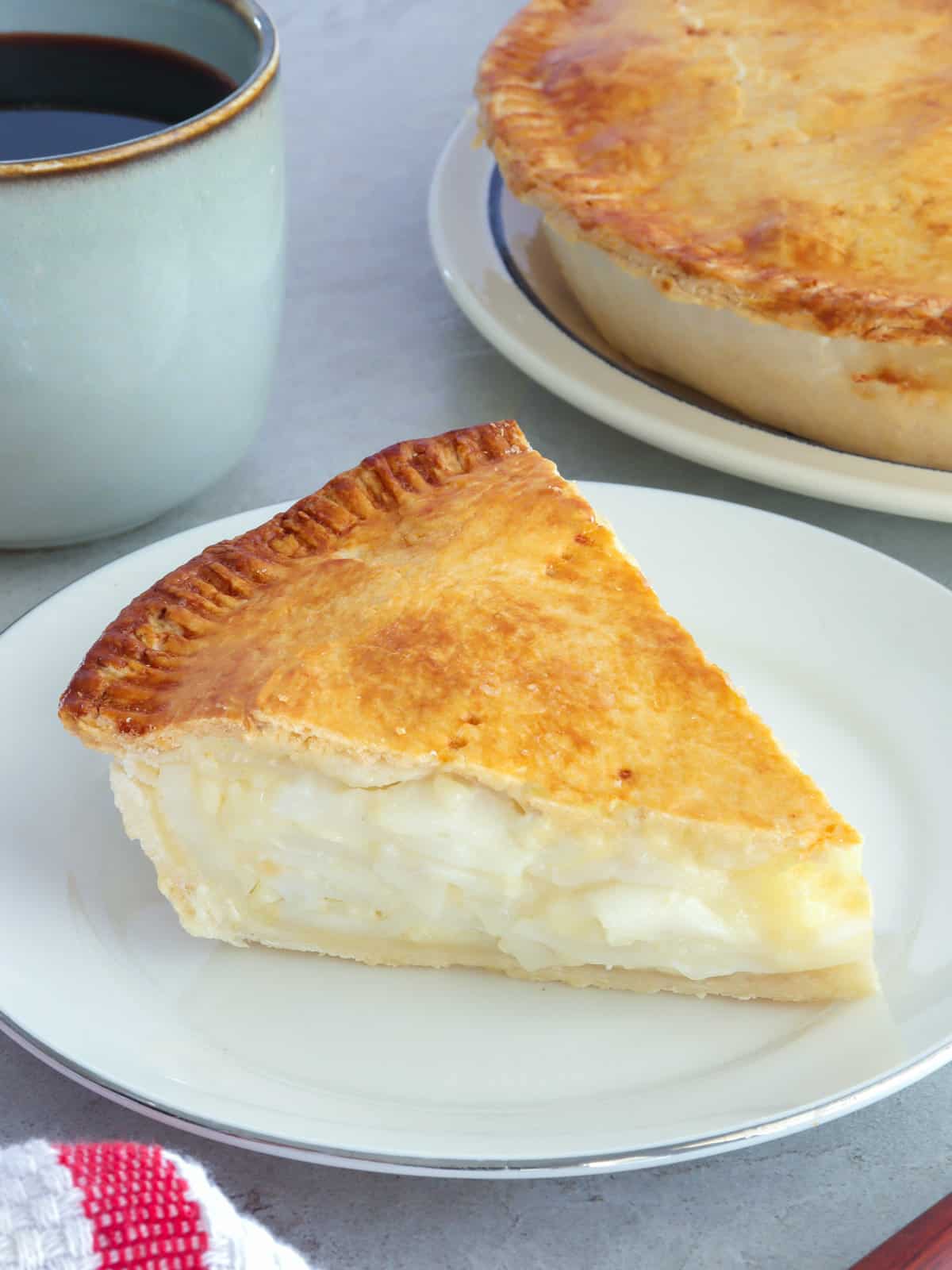
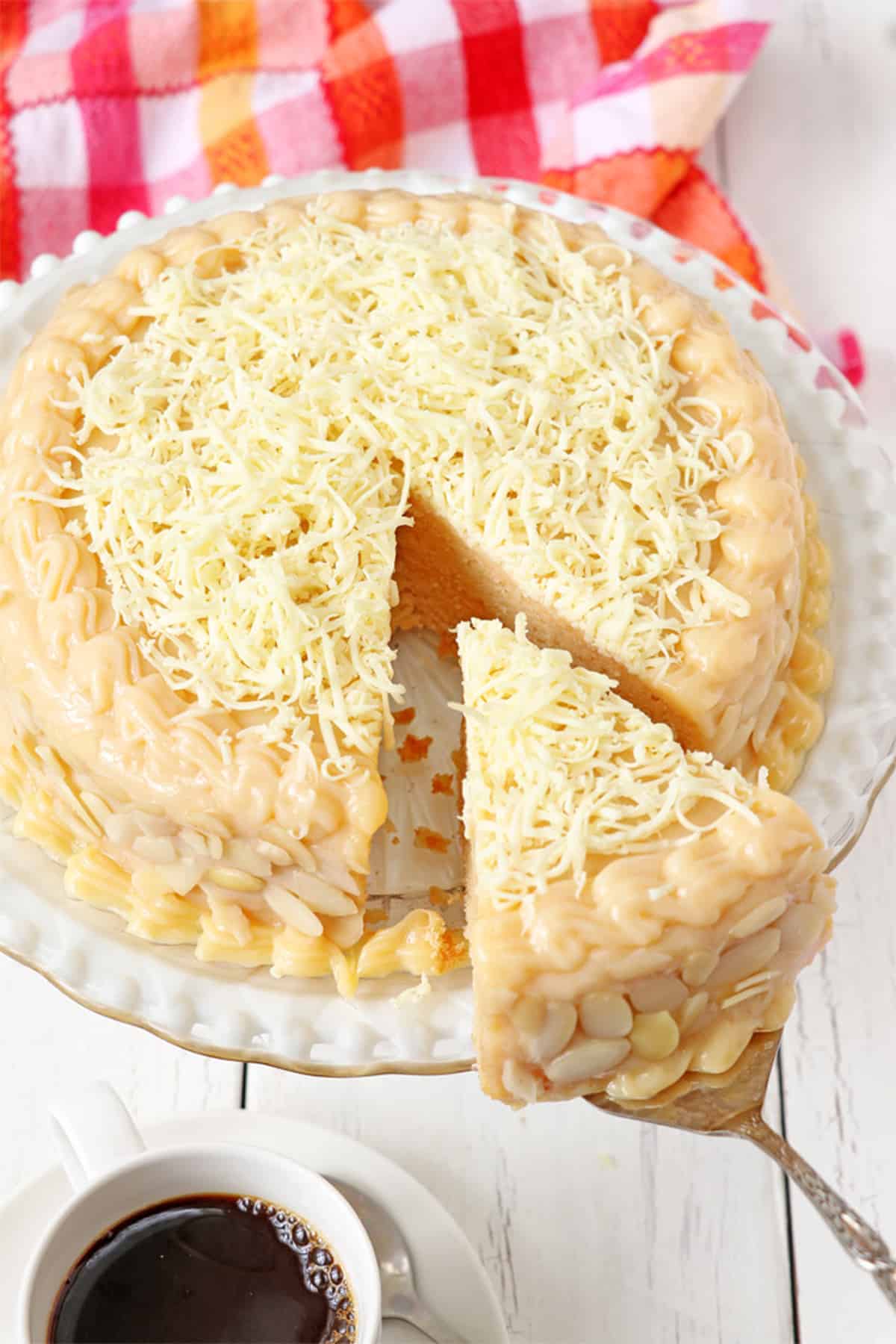
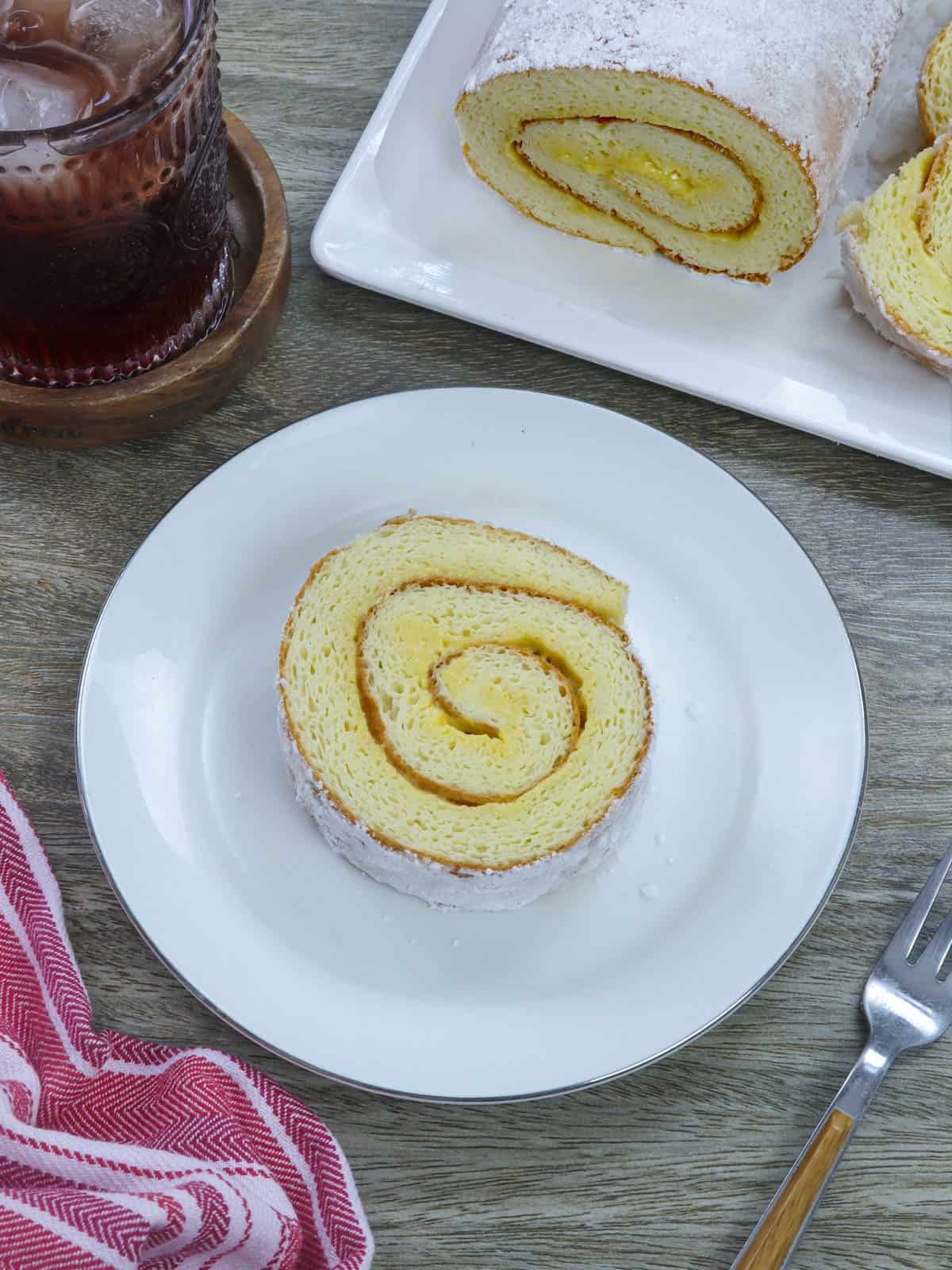
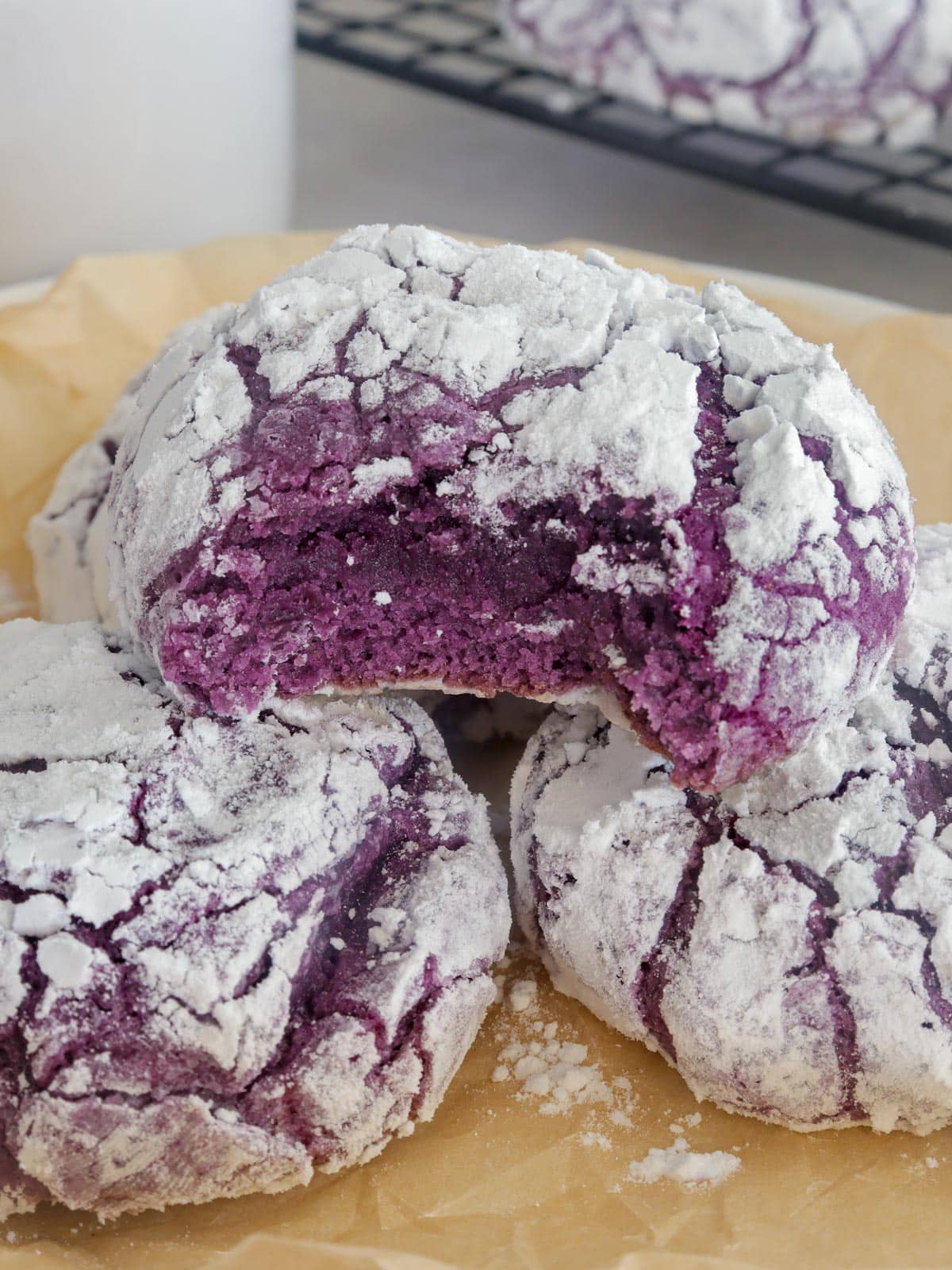
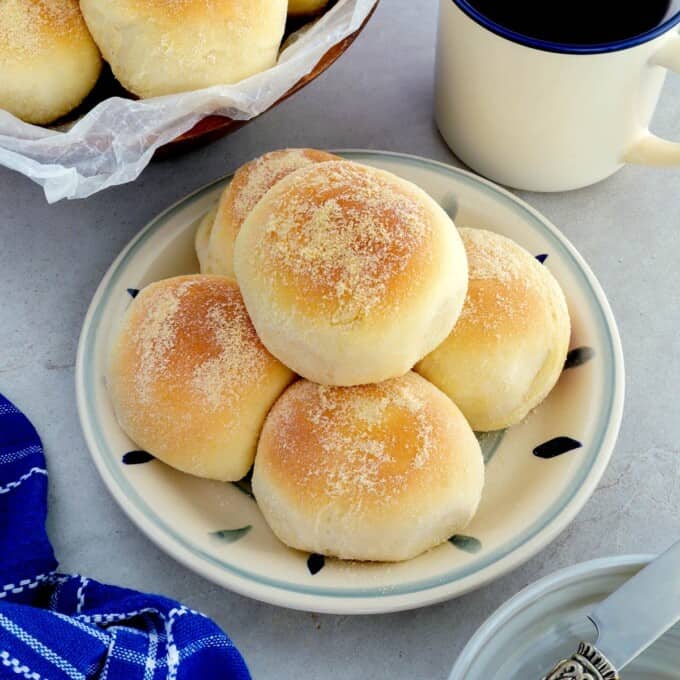
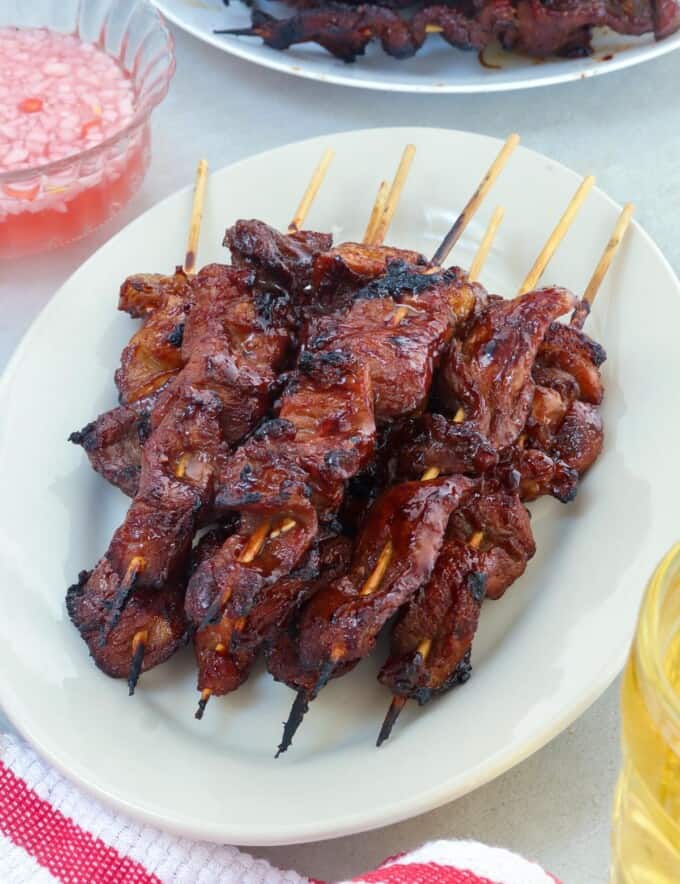
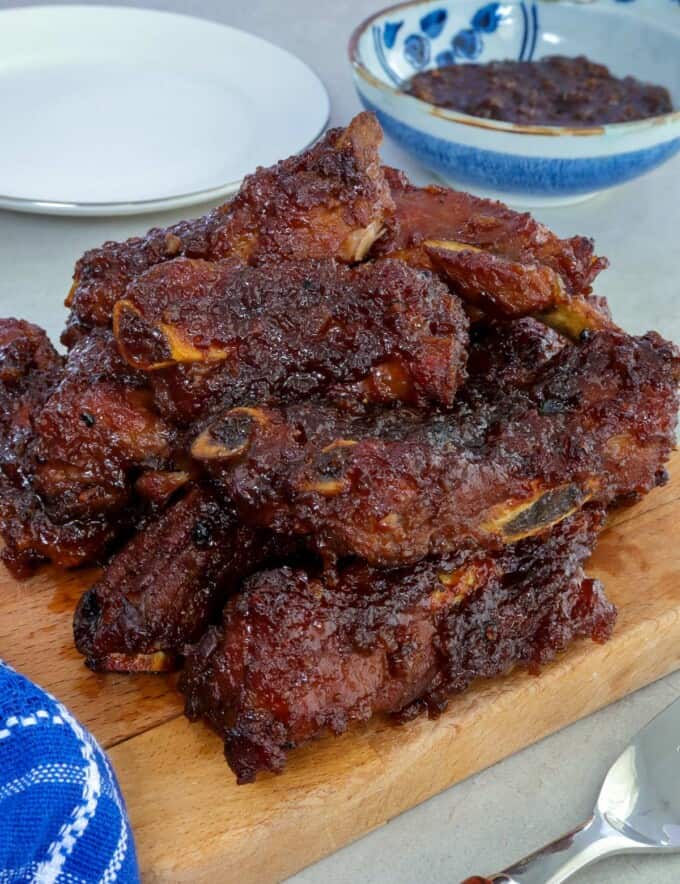
Hilda Deiparine says
Hi,
I tried to look for easy to follow instructions and I found yours. I tried this recipe, 1st time to make pandesal. Felt so good when it turned out perfect! :)) Me and my daughter tried it right away and she liked it, she doesn't even want bread. Now, I felt confident to make more and try other bread. It's hard to find pandesal as there's no asian store where we moved. So, this recipe is great! I can just make my own pandesal instead of buying 🙂 ... I just need to convert the butter and the yeast, and I got it right. Just wondering if I could make it a little bit sweeter. Thanks a lot!
Eric says
Hi Ms Lalaine,
Can I use whole wheat flour instead of AP flour? I buy wheat pandesal at Valerio's and they're good but a little crumby I guess coz of the wheat flour.
Your prompt response will be appreciated! Thank you!
Mike Manalo says
This reminds me of tasterite bakery in my province. We used to get a bag from them every morning at 4am!
Stella says
Hi can I use instant yeast instead of active dry as couldn’t find here I’m from Bahrain. and how many teaspoons I can use..? Thank You in advance 😊
Lalaine Manalo says
Yes, you can. Just use the same amount 🙂
Momzilla says
Hi! Have you tried using bleached flour? What difference does it make to use it compared to bleached? I really want it to come out perfect but i only have bleached. 🙁
Momzilla says
I meant compared to unbleached.
Margaret says
Sarap! Very easy to follow, and well worth the wait! These are delicious!
Lalaine Manalo says
Thank you for the 5 stars. Glad you liked the recipe!
Abby says
Are you able to keep the dough in the fridge to bake the next day after it has risen twice?
Jenny says
Hi Lalaine,
Thank you for.sharing your recipe. My family loved it... tried several.recipes before but yours made me a perfect baker😊😊. Thumbs'up!!! God.bless.you.
Lalaine Manalo says
Yay! Happy to know it was a success!
Jinky says
Re the yeast, the only available I can find is Instant yeast, will that be okay? Thanks.
Lalaine Manalo says
Yes, instant yeast is fine 🙂
Angelica says
Hi! Can i use margarine instead of butter? Thanks!
jcn says
Hi Ma'am, about the yeast of 1/4 ounce - is it 1/4 tablespoon? as 1 ounce is 2 tablespoons? Thank you po in advance for the reply.
jcn says
I mean 1/4 ounce is 1/2 tablespoon if 1 ounce is 2 tablespoons?
Irene says
I/4 ounce is equivalent to 1.5 tsp
RENELIZA says
What kind of milk to use. Is it evap 50 % with 50% water or full cream milk. Thank you
Lalaine Manalo says
1/4 ounce of yeast is 2 1/4 teaspoons 🙂
Maria Almario says
Hi. Can i reduce the amount of yeast in for cups of flour to make pandesal. I found out that the yeast taste is too strong when I used 2 1/4 teaspoon salt f yeast.
mark says
1/2 cup sugar? parang ang tabang po ata?
Lalaine Manalo says
Tama lang po ang lasa
AJ Alejo says
Hi! Instant yeast lang po meron ako, okay lang po yon? At ilan po ilalagay? Salamat!
Amy Boulais says
I've been craving a pandesal and thanks to this recipe. I have never made a pandesal before and my family loves it. They haven't had a pandesal before coz I bake this today and turn out really good. It's one of their favorite to munch on❤❤❤
Lalaine Manalo says
Thanks for the feedback! Enjoy the bread rolls! 🙂
alona says
can i use all purpose flour for pandesal? is it necessary to use bread flour?
Lalaine Manalo says
The recipe actually calls for all-purpose flour not bread flour 🙂
Mina says
Just wanted to thank you for this amazing recipe! My family loved it.. comments are ‘so soft’, ‘so buttery’.. its just perfect! God bless you po! I’ll try some of your other baking recipes 😊
Lalaine Manalo says
I am happy to know their comments! Glad the family loved the recipe!
Elmer Dalangin says
Does the dough really double in size during the first rising? Mine rose a little bit but not quite. Should I continue with the process? This is my first time using yeast in baking. Thank you so much for this easy to follow recipe.
Lalaine Manalo says
It should roughly double in size and will look puffed up 🙂
Cynthia says
Hello! So glad that I found your recipe, I saw a lot of recipes online that many commenters said would turn hard in just a couple hours after baking but saw many great results on yours so I decided to try it out. Been two days since then and the breads are still soft and fluffy, love them so much! Next time I'm making this I might have to double the recipe up too cause half of them are already gone by now. XD That's how good your recipe is!! Thank you so much for sharing, 10/10 would recommend! Love from Hong Kong. xx
Lalaine Manalo says
Aww, thank you so much, Cynthia. I am glad the recipe worked well for you. Enjoy!
William King says
Hi! Thank you for posting thiis. I made the pandesal and it turned out perfect but when I tried to remake it I added more sugar to it coz me and my wife likes it sweeter like the pandesal in Cavite but it cracked and got harder when it cooled down. Is there something I can adjust to make it sweeter and comes out the perfect pandesal? Thank you so much again and hope you can help me!
Lalaine Manalo says
I haven't tested this using more sugar so I am not sure how to adjust it without changes in texture. From what I've read online, too much sugar in the dough can slow down or even stop yeast activity. As your sugar levels increase, the yeast becomes stressed as less water is available for it to function. You might want to increase the amount of yeast to compensate for the higher amount of sugar added.
Agnes says
Hi! Is it ok to hand-knead the dough? I dont have a miixer at home and dont really want to buy one for now.